Calcium Intake and Food Sources
Calcium is the most abundant mineral in the human body. About 99% of the calcium in the body is found in bones and teeth, while the other 1% is found in the blood and soft tissue.
Calcium is important for a wide range of population groups, including adolescents, women who are pregnant/lactating, post-menopausal women and individuals over 55 years of age. Calcium deficiency is prevalent in adult Australian and New Zealand populations (see below), and is associated with significant health risks such as bone fracture. *EAR – Estimated Average Requirement
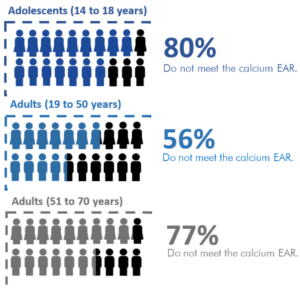
The body gets calcium in two ways –
1) by eating foods or taking supplements that contain calcium
2) by drawing from calcium in the body. If we don’t eat enough calcium-containing foods, our body will remove calcium from our bones. Ideally, the calcium that is “borrowed” from the bones will be replaced at a later point.
Daily Calcium Intake
The Recommended Dietary Allowance (RDA) for calcium is –
• Children 1 to 3 years is 500mg a day / 4 to 6 is 600mg a day / 7 to 10 years 1,300mg a day
• Adolescents – boys and girls 11 to 18 intake is 1300mg a day
• For Women 19-50 years of age is 1,000 mg daily / for women 51+, 1,200 mg / For pregnant and lactating women, the intake is 1,000 mg
• For Men 19-70 years of age, the intake is 1,000 mg / for men 71+ years, 1,200 mg a day
Where is Calcium Found in Food?
The amount of calcium absorbed and used by the body is called “calcium bioavailability.” Some foods have higher calcium bioavailability than others. For example, dairy foods have a bioavailability of about 30% absorption, so a cup of milk with 300 mg of calcium, gives about 10 mg that can be absorbed and used by the body.
Calcium is also found in plants, such as kale and other leafy greens, broccoli, bok choy, cabbage, mustard, and turnip greens, where the calcium is as bioavailable as that in cow’s milk; however, plant-based foods contain components that inhibit the absorption of calcium. Spinach contains the most calcium of all the leafy greens at 260 mg of calcium per 1 cup cooked, but it is also high in oxalates, lowering the bioavailability so that only 5% or about 13 mg of calcium can be used by the body.
Calcium is also found in soy products like tofu, fish with bones, like salmon and sardines, nuts and seeds, like almonds and especially sesame seeds, which are better eaten as tahini (for Tahini recipes please see ADD LINK HERE PLEASE)
What Interferes with Calcium Absorption?
Some plant foods contain naturally occurring plant substances, sometimes referred to as “anti-nutrients.” These anti-nutrients bind to calcium and decrease its bioavailability, examples are oxalates and phytates.
Oxalic acid or oxalate is the most potent inhibitor of calcium absorption and is found at high concentrations in spinach and rhubarb and somewhat lower concentrations in sweet potatoes and dried beans. Boiling, pairing with high calcium foods, soaking or steaming can reduce oxalates, with baking, grilling, roasting and roasting foods increasing oxalates.
Phytic acid or phytate, is a less potent inhibitor of calcium absorption than oxalate, concentrated sources of phytate are found in foods, such as wheat bran or dried beans, which substantially reduce calcium absorption. Fermentation, lowers the phytate content of bread and other fermented foods, as well boiling, germination or soaking also lowers phytates in foods, aiding calcium absorption.
Did You Know?
Certain nutrients and medications may increase our need for calcium because they either lower the absorption of calcium or cause more calcium to be excreted in the urine. These include corticosteroids (e.g. prednisone – however, do not stop taking these medications without speaking with your prescribing doctor). Other nutrients like excess salt in the diet and phosphoric acid that is found in coke, increases our need for calcium as well as excess alcohol increasing our need.
For more support on your dietary intake of any nutrient, calcium included, or support with concerns about bone health, don’t hesitate to get in touch with Sue for a discovery call or book online at https://handcraftedhealth.com.au/online-booking/

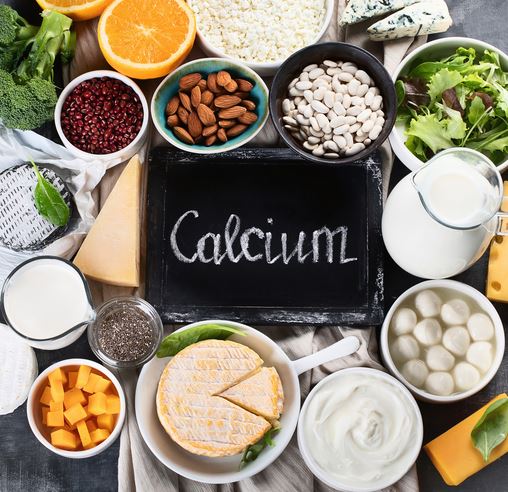



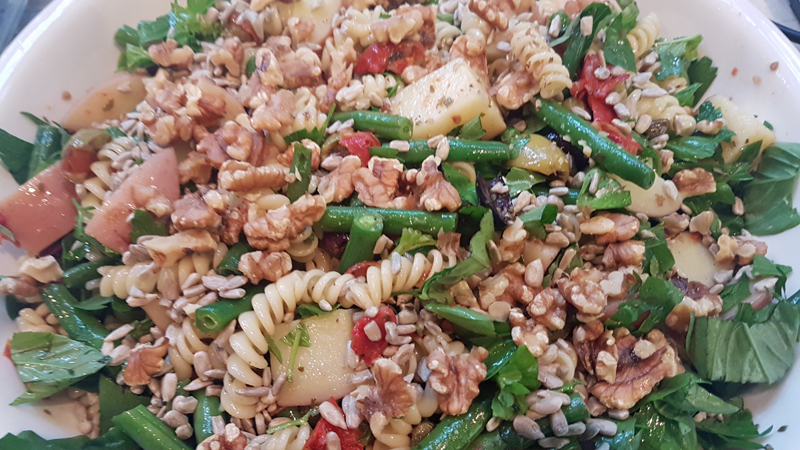
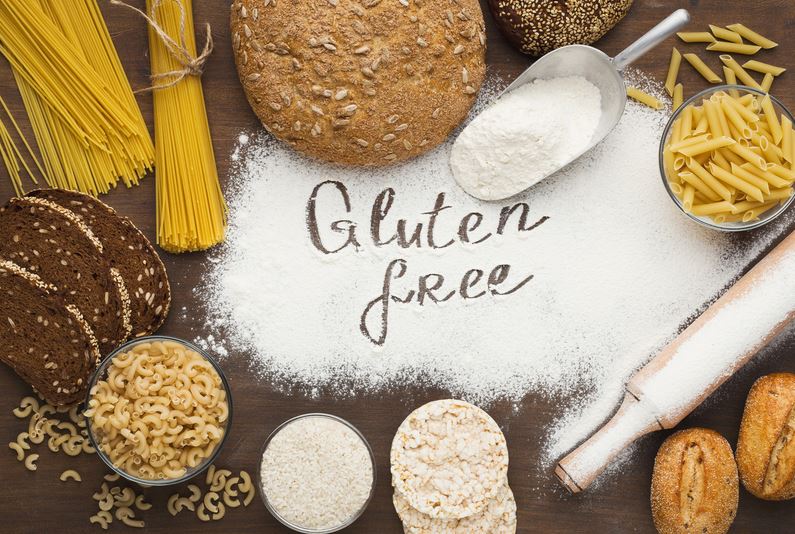
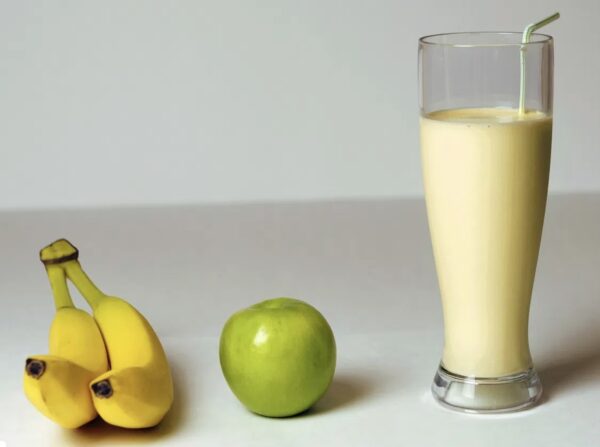

0 Comments